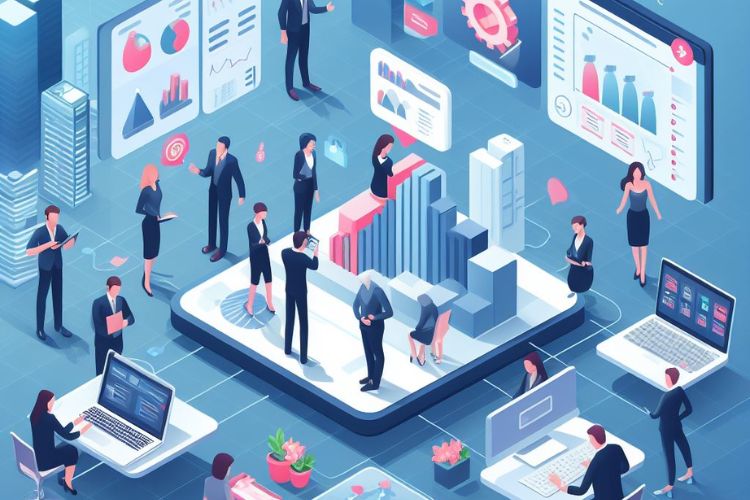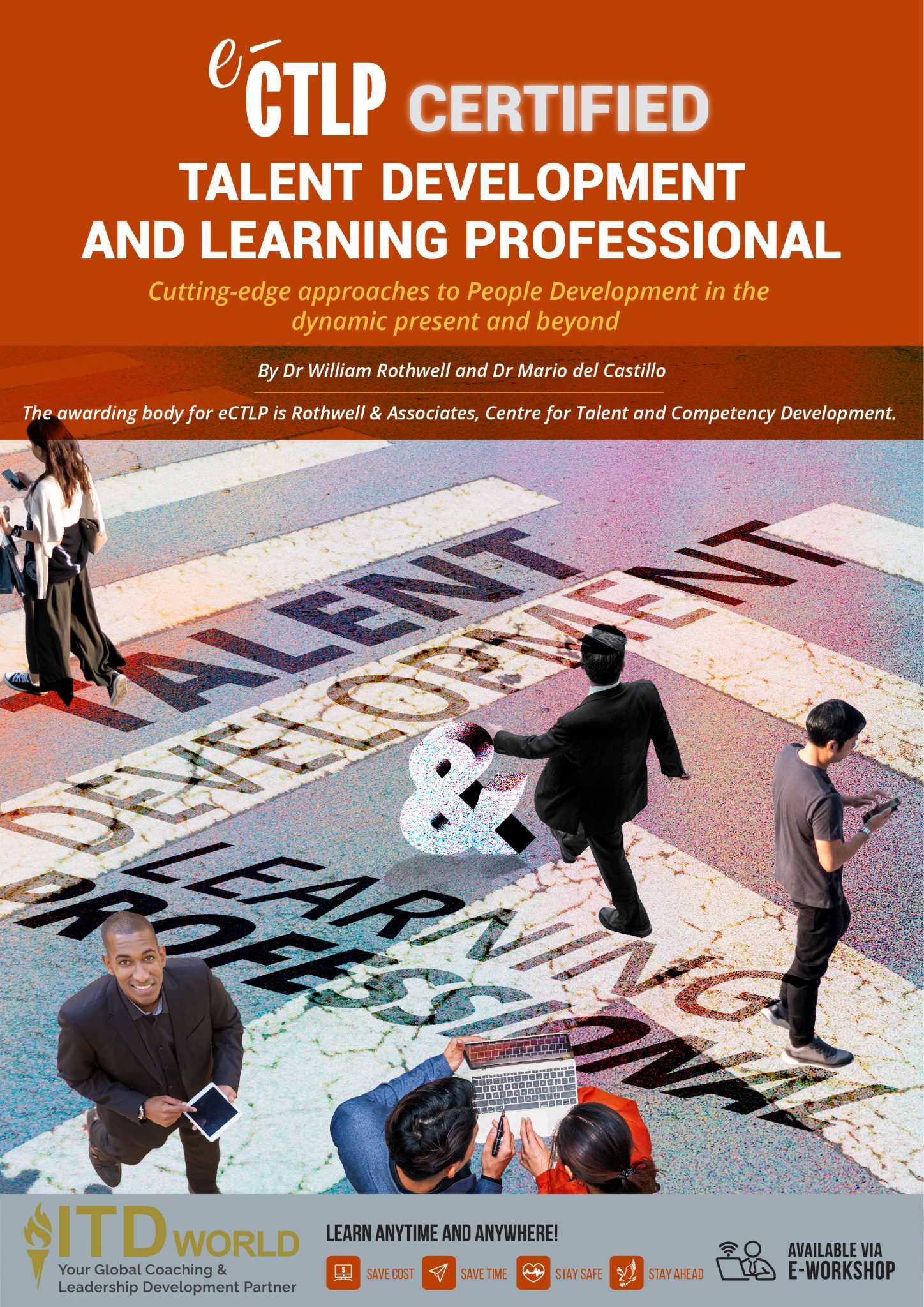From upskilling employees to fostering a culture of continuous improvement, Learning & Development has the potential to massively empower both individuals and organizations in the current ever-evolving marketplace. Investment in L&D is no longer a matter of choice – it is a strategic necessity for long-term growth.
(by Jonathan M. Pham)
What is Learning & Development?
Learning and Development – often referred to as L&D or Training & Development – is a structured and ongoing process aimed at enhancing the skills, knowledge, and overall competence of people, typically within a professional or work-related context. In the workplace, it plays a fundamental role in equipping employees with the tools they need to excel in their roles – and adapt to the evolving demands of their positions and industries.
- Learning in the context of L&D involves the acquisition of new knowledge, the development of practical skills, and the cultivation of appropriate attitudes – as such, employees not only understand the theoretical underpinnings of their roles but can also apply this knowledge effectively and possess the right mindset to succeed.
- Development, on the other hand, is a more holistic concept. It goes beyond merely acquiring new information or skills and focuses on broadening and deepening one’s knowledge and abilities in alignment with their personal and organizational development goals. For this purpose, the process may include fostering leadership qualities, enhancing problem-solving capabilities, and promoting a stronger awareness of the industry and market trends.
L&D encompasses a variety of methods and activities – examples include training, education, coaching & mentoring, feedback & evaluation. Additionally, given recent digital advancements, a range of tools and technologies are typically employed to engage and evaluate learners effectively (e.g. online learning platforms, digital devices, visual aids, and interactive simulations).
History of Learning & Development
The history of learning and development (L&D) has been influenced by a variety of factors – including social, economic, political, and technological changes, as well as the emergence of new theories and practices in education, psychology, and management. All in all, we can divide it into four main periods:
- Industrial Revolution (1800-1914)
The Industrial Revolution marked a period of extraordinary transformation in manufacturing, transportation, and communication technologies. As a result, there was a growing demand for skilled workers across various sectors. To bridge the skills gap, organizations began offering specific workplace training for their employees – which manifests in formats such as apprenticeships, on-the-job learning, and the establishment of technical schools. The curriculum during this era covered a range of topics, from engineering and mechanics to accounting and law.
Aside from heralding a shift in the nature of work, The Industrial Revolution also laid the foundation for the structured approach to employee development that we see in modern L&D.
- World Wars (1914-1945)
The two World Wars brought unprecedented global conflicts, necessitating the mobilization of vast resources and personnel. This had a profound impact on L&D. The challenges included the need to rapidly train large numbers of soldiers and civilians for military and industrial roles, as well as the loss of skilled workers due to casualties and injuries. Additionally, the wars saw the inclusion of women in roles traditionally dominated by men.
In response, L&D embraced standardized training programs, harnessed mass media and technology for content delivery, and introduced special initiatives to aid the reintegration of ex-servicemen and women into the workforce.
- Post-War Era (1945-1980)
The aftermath of the World Wars ushered in a period influenced by post-war reconstruction, globalization, decolonization, civil rights movements, and consumerism. This era emphasized the importance of education and human capital for economic growth and societal development.
L&D evolved to focus not only on skills for specific tasks – but also on nurturing the potential of individuals and organizations. This shift led to the establishment of professional associations, standards for L&D practitioners, and the development of new learning theories and models, such as adult learning, experiential learning, and self-directed learning. Learning opportunities and methods expanded, including formal education, informal learning, distance learning, and the early forms of e-learning.
- Information Age (1980-present)
The Information Age, beginning in the 1980s, has been characterized by the rapid advancement and widespread adoption of information and communication technologies (ICT) – which have completely revolutionized society and the workplace. As a result, they present both challenges and opportunities for L&D.
With the advent of the Information Age, society had to grapple with issues like information overload, constant change, complexity, diversity, and competition. L&D responded by adopting a more strategic and holistic approach to learning and development, aligning it with organizational objectives, fostering a culture of learning within companies, evaluating the impact of L&D on performance outcomes, and personalizing learning experiences based on individual needs and preferences.
Technology became a key enabler, with artificial intelligence (AI), analytics, gamification, virtual reality (VR), augmented reality (AR), mobile learning (m-learning), social media (s-media), and microlearning (m-learning) becoming integral components of modern L&D strategies.
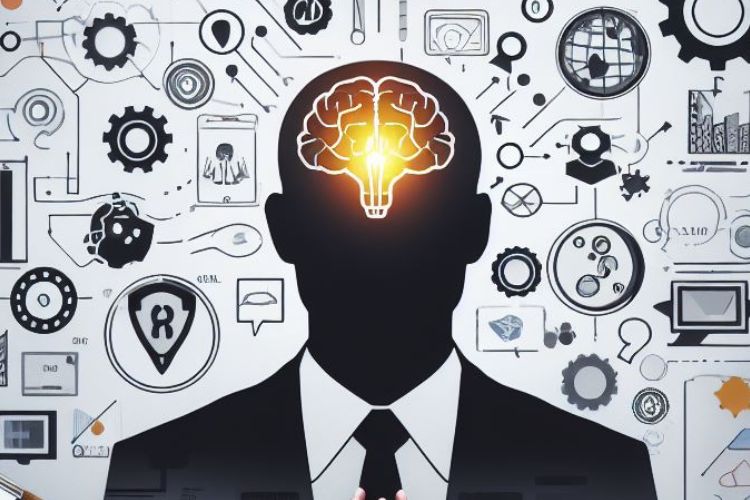
Who is Responsible for L&D?
Learning and Development is a pivotal function within organizations. The responsibility for L&D is often distributed among several key stakeholders – who work together to create a thriving culture of learning and development within the organization.
- L&D professionals
L&D professionals hold a central role in designing, developing, and delivering learning programs. These people are not only content creators – but also advisors and consultants to other stakeholders. Their job is to ensure that Learning & Development initiatives are closely aligned with the strategic goals of the organization and the unique needs of its employees.
L&D professionals come in various roles and titles, including learning and development managers, learning and development specialists, instructional designers, trainers, facilitators, coaches, mentors, and consultants.
- Human Resources (HR)
HR departments often assume a pivotal role in overseeing the L&D function. They provide strategic guidance and work closely with L&D professionals to weave the latter’s initiatives into broader HR strategies. Their collaboration ensures that training needs are identified, resources are allocated effectively, and the impact of L&D programs is measured comprehensively.
HR is also responsible for creating a seamless connection between L&D and talent management, recruitment, and other HR functions, ensuring a cohesive approach to employee development.
- Managers & supervisors
Managers and supervisors are key players in the Learning & Development ecosystem. They have a direct and immediate impact on the learning experiences of their teams – by identifying training needs within their departments. Their job is to actively encourage employee participation in L&D activities – and to provide feedback on the effectiveness of such programs. Additionally, they support employees in applying the skills and knowledge acquired in their day-to-day tasks.
- Employees
The ultimate responsibility rests with the employees themselves – who need to play a proactive role in seeking out and participating in L&D opportunities. Self-directed learning and personal initiative are fundamental in the modern workplace. As such, employees are encouraged to be inquisitive, seek out new knowledge and skills, and apply what they’ve learned to enhance their performance.
The leadership team, including executives and top-level management, sets the tone for the organization’s commitment to Learning & Development. They champion L&D initiatives, demonstrating a belief in the value of continuous learning and development. Their buy-in is pivotal in creating an environment where learning and development are viewed as essential components of the organization’s long-term success.
Read more: Executive Coaching for Sustainable Results
Why is Learning & Development Important?
An investment in knowledge pays the best interest.
Benjamin Franklin
Learning and Development is a strategic investment that yields a multitude of benefits for both individuals and organizations:
For employees
- Enhanced skills & performance: L&D programs empower employees with the tools they need to excel in their current roles and to prepare for future challenges. This continuous learning cycle equips them with the latest skills, knowledge, and capabilities, driving improved job performance.
- Career advancement: L&D sets employees on a trajectory for career growth. It opens up opportunities for advancement within the organization and enhances their attractiveness to potential employers, making them more competitive in the job market.
- Motivation & job satisfaction: Lifelong learning has been found to be closely linked to increased satisfaction. Those who feel supported in their personal and professional development are generally more engaged and happier in their roles.
- Network building: L&D initiatives often provide opportunities for employees to connect with peers, mentors, managers, and customers. These relationships foster personal and professional growth, creating a web of support and knowledge-sharing that often prove invaluable.
For organizations
- Workforce adaptability: Learning & Development is a cornerstone of modern human resource management. A well-trained workforce has been found to be more adaptable and resilient in the face of changing markets and technologies. Those who have continuous access to learning opportunities are better equipped to cope with transformations, thereby ensuring organizational agility.
- Innovation & competitive edge: Learning fosters innovation. An organization committed to L&D is more likely to stay ahead of the competition by encouraging fresh ideas, approaches, and creative problem-solving.
- Enhanced performance & profitability: The impact of L&D on an organization’s performance and profitability is substantial. According to McKinsey, companies that invest in developing their leaders during significant transformations are 2.4 times more likely to meet their performance targets. Moreover, focusing on employee strengths and bridging knowledge gaps can lead to profit increases ranging from 14 to 29%.
- Talent attraction & retention: Millennials, in particular, highly value opportunities for growth and development when choosing where to work. Providing these chances is instrumental in attracting and retaining top talent who align with the organization’s vision and values.
- Employer branding: Organizations that invest in L&D project an image of being an employer of choice and a leader in their industry. A commitment to people development enhances a company’s brand and reputation, making it an attractive destination for both customers and future employees.
- Risk mitigation: L&D programs help reduce risks related to non-compliance, errors, accidents, and potential lawsuits. Well-trained employees are better equipped to navigate regulatory complexities and perform their tasks accurately and safely.
- Knowledge transfer & succession planning: L&D also plays a crucial role in transferring knowledge within the organization, contributing to maintaining a robust talent pipeline. This ensures that essential institutional knowledge is preserved and passed down to new generations of employees.
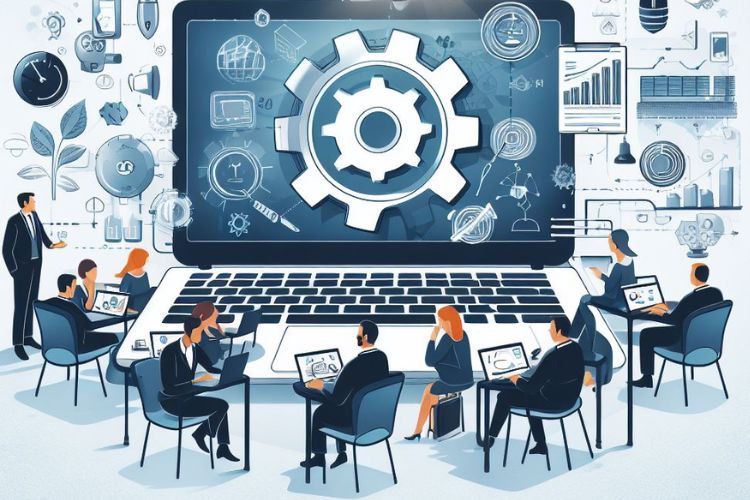
Roles of L&D in the Workplace
- Identifying skills gaps
L&D takes on the responsibility of proactively identifying skills gaps within the workforce. Through skills assessments, surveys, and performance evaluations, Learning & Development professionals pinpoint areas where employees may lack the necessary competencies. This assessment serves as the foundation for targeted training and development initiatives, ensuring a workforce that is competent and capable.
- Skills training
A central role of L&D is the design and implementation of strategies to develop specific competencies required for various job roles. These can encompass a wide range of skills, including technical proficiency, software training, communication skills, customer service training, and more. By providing tailored skills training, L&D equips employees with the capabilities they need to excel in their roles.
- Performance enhancement
Through ongoing training, skill development, and knowledge transfer, employees become more proficient in their tasks. The results are improved productivity, reduced errors, and an overall elevation in the quality of work – which benefit the organization as a whole.
- Talent development
As mentioned, a commitment to employee growth enhances the organization’s reputation as an employer of choice. Potential employees are drawn to companies that invest in their development – while existing ones are more likely to stay with organizations that prioritize their career advancement.
- Orientation
L&D supports new employees by providing them with comprehensive orientation programs – which offer insights into the company’s mission, values, policies, procedures, leadership team, benefits, and more. Orientation ensures that new hires feel confident and comfortable in their roles and quickly integrate into the organization.
- Onboarding & new hire training
Onboarding programs enable new team members to acclimate to the company culture and better grasp their roles and responsibilities. This fosters a sense of belonging and accelerates the integration of new hires into the workforce.
- Compliance training
L&D ensures that employees are well-informed about company policies, legal requirements, and industry regulations. Compliance training is essential for mitigating risks and maintaining ethical business practices. It helps prevent costly legal issues and fosters an organizational culture of ethical conduct.
L&D is instrumental in cultivating effective leaders within the organization. Leadership development programs provide the skills and knowledge required to motivate teams, drive organizational change, make strategic decisions, and create a positive and productive work environment.
- Career development
L&D empowers employees to identify their career goals, map out career paths, and acquire the skills needed for advancement. This can involve career counseling, mentorship programs, or access to online learning resources.
Read more: Talent Acquisition – Strategies & Insights for Success
Areas of Learning & Development
Learning and Development is a multifaceted endeavor, encompassing a wide array of areas – which can be broadly categorized into three main domains, each addressing specific facets of professional growth and effectiveness.
-
Technical skills development
Technical skills development focuses on equipping employees with the knowledge and expertise necessary to excel in their job-related tasks. It encompasses a wide range of technical proficiencies tailored to the specific needs of the organization and industry. Key elements within this domain include:
- Software training: In a digitally-driven world, training in various software applications is essential. Whether it’s mastering productivity tools, industry-specific software, or data analysis programs, employees must be adept at using the digital tools relevant to their roles.
- Data analysis & reporting: The increasing emphasis on data-driven decision-making has resulted in the need for data analysis and reporting skills – this includes understanding data visualization, interpretation, and the ability to use analytics tools.
- Project management methodologies: Training in project management methodologies equips employees with the skills to initiate, plan, execute, and oversee projects, ensuring they meet objectives and deadlines.
- Engineering & design principles: In technical fields, employees are typically expected to understand the underlying concepts and best practices in their respective domains to drive innovation and quality.
- Industry-specific regulations & standards: Different industries have unique regulations and standards that must be adhered to. Training in these regulations ensures compliance and safe, ethical, and efficient operations.
-
Soft skills development
Soft skills development hones the interpersonal, communication, and behavioral competencies that foster effective collaboration, problem-solving, and overall professional success. These are essential for building positive work relationships and contributing to a harmonious work environment. Key elements within this domain include:
- Communication: Effective communication is a cornerstone of professional success. This includes verbal and written communication, active listening, and the ability to convey ideas clearly and persuasively.
- Interpersonal: Building rapport, teamwork, conflict resolution, and negotiation are vital interpersonal skills. These abilities are crucial for fostering collaboration, resolving disputes, and achieving common goals.
- Leadership: Leadership skills encompass a range of competencies, from motivating and inspiring others to making effective decisions and thinking strategically. Developing leadership skills is essential for those in supervisory or managerial roles.
- Problem-solving & critical thinking: The ability to analyze situations, think creatively, and adapt to changing circumstances is at the heart of effective problem-solving and critical thinking. These skills are valuable in a variety of contexts, from day-to-day decision-making to strategic planning.
- Emotional intelligence: Emotional intelligence includes self-awareness, empathy, and the capacity to manage emotions and build positive relationships. It plays a pivotal role in fostering a harmonious and emotionally healthy work environment.
-
Personal & professional development
Personal and professional development encompasses a broad range of activities aimed at promoting individual growth, career advancement, and overall well-being. This domain focuses on holistic development and includes:
- Career development: Career planning, goal setting, resume writing, and interview skills are vital components of career development. Employees are encouraged to map out their professional paths, set objectives, and be equipped for job transitions.
- Time management & productivity: Effective time management and productivity techniques help employees prioritize tasks, stay organized, and create efficient schedules, ultimately enhancing their productivity and work-life balance.
- Personal effectiveness: Personal effectiveness training includes stress management, work-life balance strategies, and mindfulness techniques – which all serve to promote overall well-being and emotional resilience.
- Continuous learning: Encouraging a growth mindset and fostering a culture of continuous learning is integral to staying up-to-date with industry trends. It empowers team members to seek out learning opportunities and take charge of their own development, ensuring they remain adaptable and responsive to change.
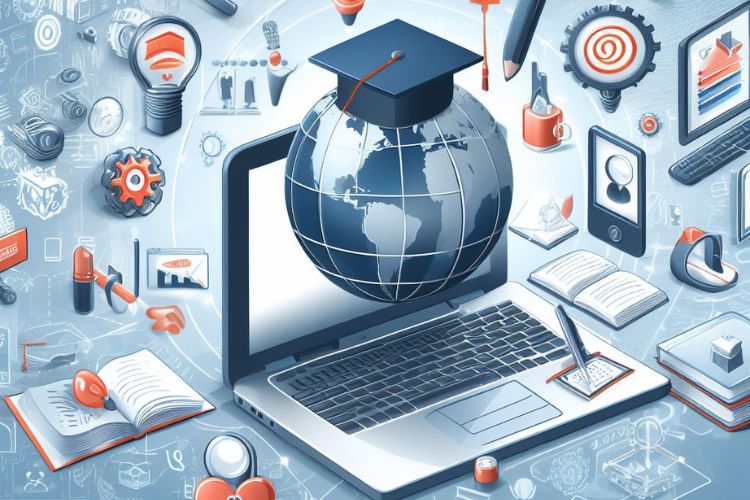
Types of Learning & Development
-
Instructor-led training (ILT)
Instructor-led training takes place within a traditional classroom setting, with an instructor leading a group of learners through the training process. This method is effective for imparting knowledge, demonstrating skills, and facilitating group discussions. It offers a structured and interactive learning environment, ideal for topics that benefit from direct interaction and immediate feedback.
-
e-Learning and online courses
E-learning leverages digital platforms to deliver training content, often in the form of self-paced modules, interactive simulations, video tutorials, or webinars. It provides learners with flexibility and accessibility, enabling them to access materials at their own convenience.
E-learning is particularly well-suited for dispersed teams and remote learners, offering a broad range of multimedia resources to engage participants.
-
Blended learning
Blended learning combines elements of both ILT and e-learning. It offers a balanced approach by integrating instructor-led sessions with online modules. This method caters to various learning preferences, providing the benefits of personal interaction while accommodating self-paced learning.
Blended learning is versatile and can be adapted to suit a wide array of training needs.
-
On-the-job training (OJT)
On-the-job training involves hands-on learning within the actual workplace, often under the guidance of a supervisor or an experienced colleague. It is highly effective for acquiring job-specific skills and procedures.
OJT facilitates practical learning by allowing employees to immediately apply what they’ve learned in real-world scenarios, fostering experiential knowledge.
-
Coaching & mentoring
Coaching and mentoring are personalized forms of learning aimed at individual skill development, performance enhancement, and career advancement. Specifically:
- Coaching: In coaching, a professional coach works one-on-one with a learner to help them achieve specific goals. This approach is beneficial for developing personal and professional skills, such as self-awareness, confidence, motivation, and performance. Coaching assists learners in identifying their strengths, weaknesses, opportunities, and challenges and helps them create actionable plans for improvement.
- Mentoring: Mentoring involves an experienced employee (mentor) guiding and supporting a less experienced employee (mentee) in their career development. It’s an effective way to transfer knowledge, skills, insights, and advice from mentors to mentees. Aside, it also provides mentees with the opportunity to learn from mentors’ expertise and experience, while mentors develop their leadership and communication skills.
-
Social learning
Social learning encourages team members to share knowledge and learn from each other through collaborative platforms, communities of practice, or peer-to-peer mentoring. This approach harnesses the collective intelligence of the organization and promotes a culture of shared learning. It thrives on social interaction and informal knowledge exchange, creating a dynamic learning ecosystem within the workplace.
Social learning fosters a sense of community, stimulates innovation, and enhances the organization’s ability to adapt to change and evolving challenges.
Learning & Development Frameworks
70-20-10 model
The 70-20-10 model is a well-established framework that suggests people learn best through a combination of three sources:
- 70% from on-the-job experiences: This emphasizes that a significant portion of learning occurs while employees are actively engaged in their work. Hands-on experiences, challenges, and tasks contribute substantially to skill development.
- 20% from interactions with others: Social learning and peer-to-peer interactions play a pivotal role in knowledge acquisition. Additionally, collaboration, feedback, and mentorship are vital components of this segment.
- 10% from formal education: This portion underscores the importance of structured and formal learning environments, such as classroom training, e-learning courses, and workshops.
The 70-20-10 model highlights the significance of experiential and social learning and emphasizes the role of managers and mentors in supporting continuous development.
ACADEMIES framework
The ACADEMIES framework, proposed by McKinsey, comprises 9 dimensions essential for building a robust learning and development function:
- Alignment: Ensuring Learning & Development initiatives align with organizational goals and strategies.
- Culture: Creating a learning-centric culture where continuous development is encouraged.
- Assessment: Regularly evaluating learning needs and performance gaps.
- Design: Crafting engaging and effective learning experiences.
- Evaluation: Measuring the impact and effectiveness of L&D programs.
- Management: Efficiently managing L&D resources, budgets, and timelines.
- Innovation: Embracing innovative learning methods and technologies.
- Engagement: Engaging and motivating learners to participate in L&D initiatives.
- Sustainability: Ensuring the long-term viability and relevance of such programs.
The framework provides organizations with a systematic and holistic approach to designing, implementing, and evaluating their learning and development programs.
3-to-1 model
The 3-to-1 model is a relatively recent alternative to the 70-20-10 model. It suggests a more balanced ratio of learning sources, with a distribution of:
- 33% from on-the-job experiences: Emphasizing the importance of experiential learning, similar to the 70-20-10 model.
- 33% from interactions with others: Acknowledging the continued role of social and peer-based learning in knowledge acquisition.
- 33% from formal education: Signifying that structured learning remains valuable for skill development.
This approach challenges the perception that the 70-20-10 model adequately represents the evolving needs and preferences of learners in the digital age. It promotes a more equal distribution of learning sources, reflecting the increasingly interconnected and multifaceted nature of modern learning.
Read more: Employee Engagement in the Digital Age – Strategies for Powering Up Your Workforce
Learning & Development Process
Learning and Development operates as a systematic process designed to empower individuals and organizations with the skills and knowledge they need to thrive. This structured approach encompasses several key steps that are essential for achieving effective and sustainable growth:
- Needs assessment
The process begins with a thorough assessment of the organization’s learning needs and gaps. This analysis is rooted in various sources, including the organization’s business strategy, goals, and future competency requirements. Employee feedback, performance data, and insights from surveys, interviews, focus groups, and performance reviews also play a vital role in this phase. The objective is to pinpoint areas where learning can lead to meaningful improvements.
- Goal setting
Once learning needs are identified, L&D professionals proceed to establish clear and measurable goals for their development initiatives. These objectives should align seamlessly with the organization’s strategic objectives and address specific performance gaps or skill deficiencies.
- Design & Development
With goals in place, the next step is designing and developing learning solutions that effectively address the identified needs and gaps. This phase employs various methods and formats, such as formal training sessions, informal learning experiences, coaching, mentoring, and e-learning modules. The focus here is on creating engaging content and determining the most suitable delivery format, be it in-person, online, blended, or a combination of methods.
- Implementation
The successful design and development of learning solutions pave the way for their implementation. L&D professionals carefully choose the channels and platforms that will deliver these solutions to the target audience. This may encompass classroom sessions, online courses, webinars, podcasts, and more. The key is to make the learning accessible and engaging, tailored to the preferences and needs of the learners.
- Evaluation
Evaluation is a critical component of the Learning & Development process, involving a comprehensive assessment of the learning solutions’ effectiveness and impact. L&D professionals analyze learning outcomes, changes in behavior, and improvements in employee and organizational performance. This step provides valuable insights into the success of the L&D initiatives and highlights areas for further refinement.
- Continuous improvement
The L&D process doesn’t conclude with evaluation; it loops back to the beginning to ensure continuous growth and relevance. Based on the insights gained from evaluation and ongoing feedback, L&D professionals make necessary improvements to their learning and development programs. This iterative process guarantees that initiatives remain aligned with evolving organizational needs and employees’ skill development requirements. It also ensures that the efforts stay fresh, engaging, and genuinely effective in fostering growth.
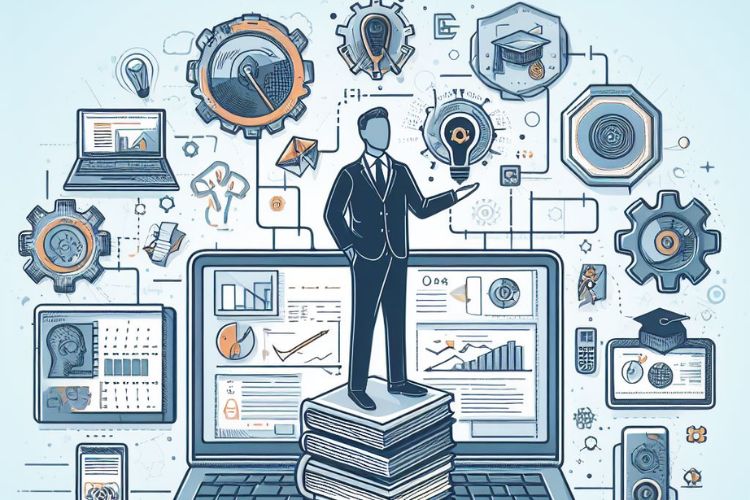
Learning & Development Methods
- Classroom training
Classroom training is a structured, formal setting where a trainer imparts knowledge and skills to participants. It’s particularly effective for delivering standardized information, concepts, or procedures to a larger group of learners. This method can be enriched with interactive elements, such as discussions, exercises, or quizzes, to enhance engagement and retention.
Classroom training creates a conducive environment for in-depth learning, ensuring that participants have ample opportunity to clarify doubts and discuss topics.
- Discussion groups
Discussion groups create a highly interactive setting where participants actively share their viewpoints, experiences, and insights on a given topic. As such, they are exceptional for stimulating critical thinking, creativity, and collaboration among learners.
Moreover, discussion groups foster a culture of learning and feedback within the organization, promoting a continuous improvement mindset.
- Experiential activities
Experiential activities are a hands-on, participatory approach to learning. They involve active engagement and practical experience. This method is effective for developing practical skills, such as teamwork, communication, problem-solving, and leadership. Participants learn by doing and applying their knowledge to real-world situations and challenges.
Experiential activities reinforce learning through direct experience, making it a powerful tool for skill development.
- Gamification
Gamification is the infusion of game mechanics – examples include points, badges, leaderboards, and challenges – into Learning & Development activities to make learning more engaging and interactive. It taps into our natural inclination for competition, achievement, and rewards – making it an ideal choice for topics that require repetitive practice or memorization.
Gamification increases motivation, engagement, and knowledge retention by transforming learning into an enjoyable and rewarding experience.
- Microlearning
Microlearning breaks down learning content into bite-sized, easily digestible portions. Designed for just-in-time training, refresher courses, or quick access to knowledge nuggets, it is particularly suited for delivering concise information, reinforcing key concepts, and providing instant access to relevant information.
Learning & Development Activities
By diversifying L&D activities, organizations can ensure that their employees are continuously engaged and motivated to develop their skills and knowledge:
- Job shadowing
Job shadowing involves a learner observing and following an experienced employee in their role. It’s an effective method for introducing new employees to the organization, its culture, and its processes.
Job shadowing offers firsthand insights into the expectations, responsibilities, and best practices associated with a particular role. It bridges the gap between theory and practice, enabling learners to understand how their work contributes to the organization’s success.
- Workshops & seminars
Workshops and seminars are structured learning events that provide opportunities to delve into various topics. They can cover an array of subjects, from effective verbal and written communication to active listening, and presentation skills. These sessions often invite subject matter experts to share insights on industry-specific regulations, standards, and best practices.
- Simulations
Simulations offer a dynamic and immersive learning experience – by engaging employees in interactive scenarios that mirror real-world situations. The activity is particularly effective for practicing project management and interpersonal skills, such as conflict resolution, negotiation, and teamwork. By allowing participants to make decisions and see the consequences of their actions, simulations provide a safe space for experiential learning.
- Problem-solving challenges
Problem-solving challenges are designed to put critical thinking, analytical skills, and creative problem-solving to the test. These activities present learners with complex, real-life problems to solve. They encourage participants to think outside the box, collaborate with peers, and develop innovative solutions.
- Career coaching sessions
Career coaching sessions provide one-on-one guidance to employees seeking career development. This form of personalized coaching addresses career planning, goal setting, resume writing, and interview skills. It helps individuals clarify their career objectives, chart a path for advancement, and enhance their employability.
Learning & Development Skills
Learning and Development professionals are the architects of transformation within organizations, entrusted with designing, implementing, and evaluating learning interventions that fuel employee growth and boost organizational capabilities. To excel in this multifaceted field, one must possess a diverse set of skills, which can be categorized into three primary areas:
Soft skills
- Empathy: Understanding and sharing the feelings, needs, and perspectives of learners is the cornerstone of effective L&D – so that one may be able to deliver experiences that resonate with their audience.
- Communication: The ability to convey information, ideas, and feedback clearly and persuasively is pivotal. L&D professionals must be adept at using various communication modes and channels to engage their learners.
- Creativity: Innovation is at the heart of Learning & Development – it enables people to generate original and engaging learning solutions that meet the desired learning objectives and outcomes.
- Collaboration: Effective teamwork is essential. L&D professionals need to collaborate with peers, managers, mentors, coaches, and stakeholders to achieve common goals and deliver impactful learning solutions.
- Facilitation: Leading engaging and interactive training sessions is a core skill to encourage participation and elevate the learning experience.
- Adaptability: Change is constant. As a result, L&D professionals must have the adaptability to navigate evolving situations, expectations, and technologies, embracing new challenges and opportunities for learning and development.
Technical skills
- Analysis: A thorough analysis is the foundation of effective Learning & Development. L&D professionals must conduct in-depth analyses to identify learning needs, skill gaps, and performance issues – from which they may formulate clear, measurable, and achievable learning objectives that align with organizational goals.
- Instructional design: Selecting the right training methods, developing engaging content, and structuring effective learning activities are key requirements.
- Learning technologies: The digital age offers a plethora of tools to enhance learning. As such, L&D professionals must be well-versed in e-learning platforms, authoring tools, and multimedia software.
- Assessment & Evaluation: Designing assessments to measure learning outcomes and evaluating the effectiveness of training programs are vital components of the process. Robust assessment and evaluation processes help refine learning initiatives and ensure they meet their objectives.
Business acumen
- Strategic alignment: Learning & Development initiatives must be in sync with the organization’s strategic goals and objectives.
- Performance management: Understanding how L&D contributes to enhanced employee performance and organizational outcomes.
- Change management: As organizations evolve, L&D professionals facilitate organizational change and assist employees in adapting to new processes, technologies, or strategies.
- Data analysis: Gathering and analyzing data is essential for measuring the impact of L&D initiatives and demonstrating return on investment (ROI).
- Industry knowledge: Staying informed about industry trends, emerging technologies, and new learning methodologies is crucial to remain effective and innovative.
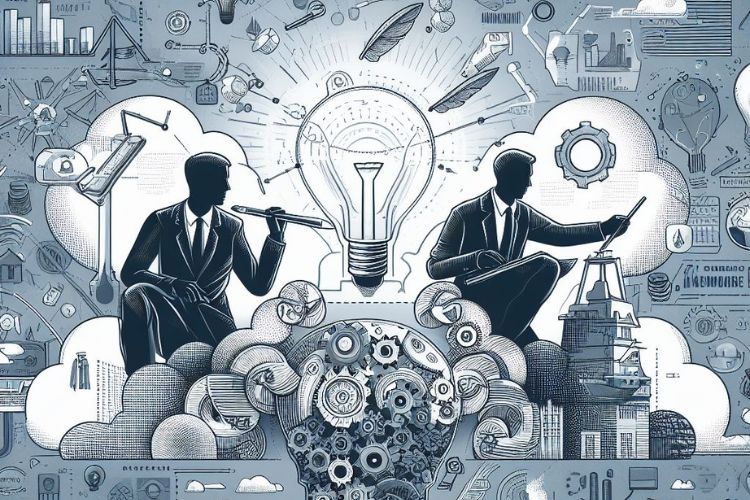
How to Create a L&D Strategy
An effective Learning & Development strategy has the power to empower employees, align with organizational goals, and unlock the full potential of an organization. To come up with one, here’s a list of essential components to consider:
- Alignment with organizational goals: The cornerstone of a robust plan is alignment with organizational priorities. Begin by identifying specific business goals, whether it’s improving customer service, increasing sales, or enhancing innovation.
- Clear goals: Set clear, measurable, and achievable objectives for your L&D initiatives. These should correlate with the identified capability gaps and the estimated value that bridging these gaps will bring to the organization. When goals are well-defined, it becomes easier to track progress and measure the impact of your efforts.
- Assessment of capability gaps and estimated value: Conduct a comprehensive analysis to identify capability gaps within your workforce. Understand what skills and knowledge are lacking and quantify the estimated value of closing these gaps.
- Design of learning journeys: These should outline the sequence of training, development activities, and resources that will help them acquire the necessary skills and knowledge. The learning journey should be tailored to meet specific needs and be adaptable to different roles and career stages within the organization.
- Co-ownership between departments: L&D is most effective when it is a shared responsibility. Foster collaboration between business units and the HR department. Encourage business leaders to actively participate in defining their teams’ Learning & Development needs.
- Integration of L&D interventions into HR processes: Embed training and development programs within performance reviews, career planning, and succession planning. Ensure that learning and development are not standalone initiatives but integral parts of the employee journey within the organization.
- Systems & Learning technology applications: Whether through e-learning platforms, multimedia tools, or innovative technologies like artificial intelligence (AI) and gamification, ensure that your learning solutions are engaging, accessible, and tailored to the preferences of your learners.
- Feedback & Measurement: Collect and analyze data on learning outcomes, behavior change, and performance improvement. Solicit feedback from learners, managers, and stakeholders to gauge satisfaction and gather suggestions for enhancement. This ongoing feedback loop identifies strengths and weaknesses in your L&D program and highlights areas for improvement or modification.
Read more: Employee Development Plan – Fueling Future Success
Measuring the Effectiveness of L&D – The Kirkpatrick Model
Measuring the effectiveness of Learning and Development initiatives is akin to calibrating the compass that guides your organization’s journey to excellence. The Kirkpatrick model, with its four levels of evaluation, provides a solid framework for assessing such strategies:
- Level 1: Reaction – Gauging learner satisfaction
This level seeks to evaluate learners’ reactions and responses to the training. Are they satisfied with the learning experience? Is the training engaging and relevant?
Gathering feedback is typically done through surveys, feedback forms, interviews, or focus groups. While learner satisfaction doesn’t provide the full picture of L&D effectiveness, it offers a valuable starting point to understand the training’s initial impact.
- Level 2: Learning – Assessing knowledge & skill acquisition
Here, the focus shifts to measuring the knowledge and skills that learners have acquired during the training. Are they able to apply what they’ve learned? You can evaluate this by employing tests, quizzes, assignments, or observations.
This level delves deeper into the effectiveness of the training, shedding light on whether it’s helping learners retain and apply the intended learning outcomes.
- Level 3: Behavior – Evaluating behavioral change
Here, the focus is to assess whether there have been any behavioral changes due to the training. Have employees successfully transferred their newfound knowledge and skills to the workplace? This can be evaluated through performance reviews, feedback from managers or peers, or self-reports.
It’s at this stage that Learning & Development initiatives should start having a tangible impact on performance and productivity.
- Level 4: Results – Measuring organizational impact
The pinnacle of L&D evaluation is to measure the impact of training on the organization’s goals and key performance indicators. Has the training translated into concrete results such as increased sales, revenue, customer satisfaction, or improved product quality?
Assessing Level 4 requires data analysis, metrics, and reports to calculate the return on investment (ROI) of the training – in other words, the tangible benefits of your L&D investments.
While the Kirkpatrick model provides a comprehensive structure for evaluation, it’s essential to acknowledge its limitations. First, it assumes a linear and causal relationship between the levels of evaluation, which may not always hold true in complex, dynamic organizational contexts. Specifically, the real-world impact of L&D can be influenced by numerous interrelated factors, not always following a straightforward cause-and-effect pattern. Additionally, conducting a thorough evaluation at all four levels can be resource-intensive and time-consuming.
In practice, it’s wise to use the Kirkpatrick model with flexibility and complement it with additional evaluation methods and models.
Learning & Development Challenges
- Adapting to a new reality
The COVID-19 pandemic has triggered a seismic shift in work practices, ushering in the era of remote and hybrid working, social distancing, and digital transformation. As such, L&D must evolve to support employees effectively during this period of uncertainty. This means reimagining the traditional training approach, embracing digital platforms, and developing strategies for remote learning and development.
Read more: Leading Through Uncertainty – How to Navigate Turbulent Times
- Training in a hybrid workplace
With workplaces becoming increasingly fragmented, organizations face the challenge of ensuring that learning remains accessible, engaging, and effective for employees working from different locations and on varied schedules. As a result, L&D must facilitate collaboration and communication among dispersed teams, fostering a sense of connection in the digital realm.
- Upskilling & reskilling
The unstoppable forces of automation, globalization, and digitization are redefining the skills and competencies required across various professions. L&D must identify and address the learning gaps and needs of the workforce, providing timely and relevant learning solutions to help employees adapt and thrive in the changing labor market. Initiatives focused on upskilling and reskilling are not only essential but can also be a competitive advantage for organizations that lead the charge in workforce development.
- Learner engagement
In an age of information abundance and digital distractions, capturing and sustaining the attention and interest of learners is a formidable challenge. L&D must tailor learning solutions to meet the diverse preferences, styles, and needs of learners. Personalization, interactivity, gamification, and immersive experiences can help rekindle the flame of engagement in the modern learner.
- Addressing budgetary constraints
Smaller organizations often grapple with limited Learning & Development budgets, making it challenging to invest in new technologies, hire experienced trainers, or develop comprehensive training programs. In this environment, L&D professionals must become resourceful and innovative. This includes seeking cost-effective solutions, utilizing free or open-source learning platforms, and partnering with external training providers when necessary.
Read more: Talent Transformation – Building a High-performing, Future-ready Workforce
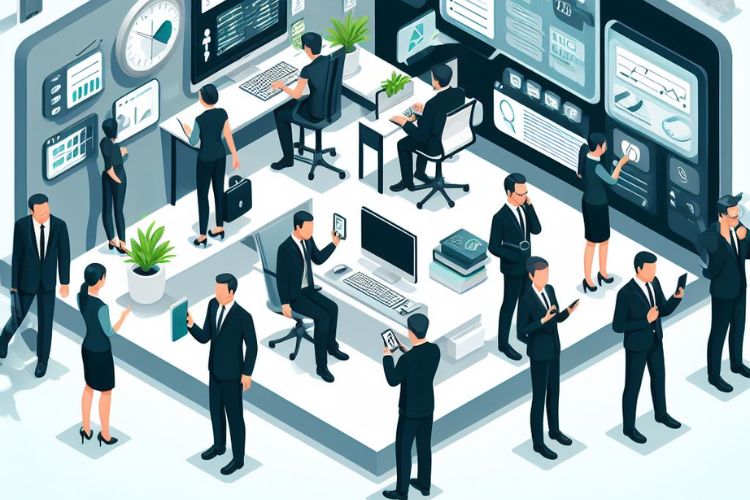
Learning & Development Best Practices
Unlocking the full potential of Learning and Development requires adherence to a set of best practices that facilitate impactful outcomes:
- Set clear goals and objectives
Establish SMART goals for your L&D programs. These objectives should be Specific, Measurable, Achievable, Relevant, and Time-bound. Such clarity provides a roadmap for your initiatives and ensures alignment with organizational objectives.
- Personalize learning experiences
A common mistake to avoid is to refrain from the urge to seek a one-size-fit-all solution. Rather, consider the unique learning preferences, styles, and needs of your audience, as well as the available resources, time, and budget. Crafting a detailed learning plan that outlines content, delivery modes, duration, frequency, and assessment can enhance the effectiveness of your program.
- Encourage continuous learning
Foster a culture where employees take ownership of their learning and development. This requires creating an environment where self-driven learning is not only encouraged but also celebrated. The modern workforce benefits from opportunities for lifelong learning, which can be enabled through ongoing professional development and access to resources that support personal growth.
- Incorporate community-based learning
Harness the power of community-based learning. A whopping 92% of L&D professionals believe that this style of learning fosters a sense of belonging in the workplace. Leveraging social learning platforms, peer-to-peer knowledge sharing, and mentoring programs can help create a collaborative learning ecosystem within your organization.
- Integrate Learning & Development into everyday work
L&D should not be a separate activity; it should be seamlessly integrated into the daily workflow. Embed learning into employees’ daily tasks, projects, and performance management systems. By connecting learning with practical applications, you ensure that new knowledge and skills are immediately relevant and applicable.
- Seek leadership buy-in
Leadership support is paramount for the success of L&D initiatives. L&D professionals must effectively communicate the value of learning and development to organizational executives and secure their buy-in for ongoing investment and support. Demonstrating how their work aligns with strategic business objectives and contributes to organizational success can win the backing of top leadership.
Learning & Development Tools
Learning and Development professionals have a treasure trove of tools at their disposal to create, manage, and track effective learning experiences:
- Course authoring tools
As the creative engines behind crafting interactive learning content, course authoring tools enable the development of courses and assessments, which can include videos, animations, simulations, quizzes, and more.
Examples: iSpring Suite, Articulate Storyline 3, and Adobe Captivate.
- Learning Management Systems (LMS)
LMS platforms serve as command centers for delivering, managing, and monitoring learning and development programs. They host courses and training materials, assign content to learners, track their progress, assess performance, and gather valuable feedback.
Examples: iSpring Learn LMS, TalentLMS, and Docebo.
- Learning Experience Platforms (LXP)
LXPs are like LMSs with an AI-powered twist. They offer more personalized and adaptive learning experiences by integrating various learning sources such as online courses, webinars, podcasts, and articles. Content is delivered to learners based on their individual needs, interests, preferences, and goals.
Examples: Valamis, Stream LXP, and NovoEd.
- Microlearning platforms
For bite-sized learning content that can be completed in minutes, microlearning platforms are the go-to choice. These modules help learners retain and apply knowledge effectively.
Examples: OttoLearn, Gnowbe, and iSpring Page.
- Virtual instructor-led training tools
Live online training sessions are made possible by these tools. They facilitate real-time interaction, screen sharing, polling, quizzes, and session recording.
Examples: Microsoft Teams, WebEx, and GoToWebinar.
- Communication tools
Smooth communication is key in L&D. These tools allow interaction with learners before, during, and after training sessions. Features include messaging, file sharing, group or channel creation, and more.
Examples: Slack, Troop Messenger, and Workplace.
- Assessment tools
Assessment tools enable the creation of quizzes, tests, and assessments to measure knowledge acquisition, skill development, and behavioral changes.
Examples: Quizzer, ProProfs Quiz Maker, and ClassMarker.
- Survey tools
Gathering feedback is essential for refining training programs. Survey tools allow L&D professionals to collect input on the effectiveness, relevance, and usefulness of training programs.
Examples: SurveyMonkey, Qualtrics, and Google Forms.
- Analytics tools
L&D professionals can gain insights into learner engagement, completion rates, and performance data using analytics tools. These insights are invaluable for evaluating the effectiveness of training programs.
Examples: Power BI, Tableau, and Google Data Studio.
Examples of Successful L&D Initiatives
- Yelp
Yelp, renowned for its online reviews and rating platform, fosters a culture of learning and development that empowers employees to take on stretch roles. By encouraging team members to assume responsibilities just beyond their current capabilities, Yelp creates an engaged workforce and a culture of coaching. This, coupled with a strong preference for promoting from within, incentivizes personal development while nurturing the growth of others.
- IBM
A global technology giant, IBM’s rich history of investing in employee education dates back to 1916. The company allocates millions of dollars annually to Learning & Development programs. These initiatives encompass a vast array of learning resources, from online courses and webinars to podcasts and simulations.
Notably, IBM leverages artificial intelligence (AI) to personalize and optimize the learning experience for each employee.
- Formlabs
Formlabs, a pioneering 3D printer developer and manufacturer, stands out with its unique L&D program, Formlabs University. This internal platform offers courses on diverse topics related to 3D printing, including design, materials, software, and troubleshooting.
What makes it exceptional is that these courses are created and delivered by Formlabs employees who are experts in their respective fields, promoting a culture of peer-to-peer knowledge sharing.
- Salesforce
As a global leader in customer relationship management (CRM) software and cloud computing, Salesforce boasts the comprehensive L&D initiative, Trailhead. This gamified and interactive online learning platform provides courses on an array of subjects related to Salesforce products, skills, and career development. Employees can earn badges and certifications to showcase their competencies, making learning not only engaging but also rewarding.
Google, a tech titan renowned for its innovative solutions, has cultivated a culture of learning and development that empowers employees to pursue their passions. The company offers various L&D programs to foster this culture – including GoogleEDU, Googler-to-Googler (G2G), and a policy that allows employees to dedicate 20% of their work time to projects they are passionate about.
Read more: Learning and Development Quotes to Fuel Your Growth

Learning & Development Career Path
A career in Learning and Development is a dynamic journey filled with opportunities to empower others and contribute to individual and organizational growth. The L&D career path consists of various levels, each offering unique roles and responsibilities:
Entry-level roles
- Training Coordinator: As a training coordinator, your role is to assist in the logistics and coordination of training programs. This includes responsibilities like scheduling training sessions, preparing materials, and managing participant registrations.
- Instructional Designer: Instructional designers are responsible for crafting engaging and effective learning content. They design e-learning modules, instructor-led training materials, and assessments that cater to different learning styles and needs.
- Learning Specialist: Learning specialists provide valuable support in the implementation and delivery of training programs. They might facilitate training sessions, manage learning technologies, and offer technical assistance to participants.
Mid-level roles
- Training Manager: At this stage, you take on a more strategic role. Training managers oversee the planning, development, and delivery of training programs. They ensure that these programs align with organizational objectives and are effective in achieving learning outcomes.
- Learning Consultant: Learning consultants are experts who offer guidance to both managers and employees on their learning and development needs. They recommend suitable training solutions and design personalized learning pathways, enhancing the overall learning experience.
- Performance Improvement Specialist: In this role, you analyze performance data and identify skill gaps. You then design interventions to improve employee performance and address organizational challenges.
Senior-level roles
- Director of Learning and Development: As a director, your job is to lead the entire Learning & Development strategy for the organization – making sure that all initiatives align with the whole business objectives, managing budgets, and overseeing the L&D team.
- Chief Learning Officer (CLO): A CLO holds a strategic leadership position. They are responsible for driving the organization’s learning culture and ensuring that L&D contributes to achieving strategic goals. This role involves innovation in L&D practices and a keen understanding of the company’s vision.
- L&D Consultant: Consultants offer independent consulting services to organizations. They provide guidance on L&D strategy, design customized training programs, and evaluate the effectiveness of L&D initiatives.
Sample Job Description (JD) from SHRM
Advancing in the Learning & Development field requires a combination of education, experience, and continuous learning. Many L&D professionals hold bachelor’s or master’s degrees in fields such as education, instructional design, or human resources. Additionally, professional certifications, like the Certified Talent Development & Learning Professional (CTLP), can significantly enhance your credibility and demonstrate your expertise.
To embark on or advance your career in this field, consider utilizing popular job boards like Indeed, LinkedIn, Glassdoor, or specialized job boards. On the other hand, joining professional organizations like the Association for Talent Development (ATD) or local L&D groups can help you connect with industry peers. Attend conferences, workshops, and networking events to expand your professional circle and uncover potential opportunities.
The Future of Learning & Development – Key Trends
The future of Learning & Development is marked by innovation, personalization, and adaptability. Organizations that embrace the following trends should be better equipped to navigate the dynamic landscape of tomorrow’s workforce:
- AI-powered personalization: Artificial intelligence (AI) is revolutionizing L&D by creating personalized learning experiences tailored to individual needs, preferences, and learning styles. AI algorithms analyze learner data, identify knowledge gaps, and recommend relevant learning content, creating more engaging and effective learning journeys.
- Immersive learning technologies: Virtual reality (VR), augmented reality (AR), and mixed reality (MR) are providing immersive and interactive learning experiences. These technologies simulate real-world scenarios, enabling learners to practice skills, explore complex concepts, and engage in experiential learning.
- Microlearning & Just-in-time learning: In a world of shorter attention spans and busy schedules, microlearning delivers bite-sized content that can be completed in minutes. Additionally, just-in-time learning provides instant access to information when needed, facilitating real-time problem-solving and performance improvement.
- Data-driven L&D: Analytics are increasingly used to measure training program effectiveness, track learner engagement, and identify areas for improvement. Data-driven insights inform decision-making, optimize resource allocation, and enhance the impact of L&D initiatives.
- Social & Collaborative Learning: Social learning platforms and collaborative tools promote knowledge sharing and peer-to-peer learning. Learners connect with colleagues, share insights, and engage in discussions, creating a more interactive and engaging learning environment.
- Focus on skills & competencies: L&D is shifting from knowledge acquisition to a skills-based approach, emphasizing practical skills required for specific roles or tasks. This approach ensures learners gain competencies that are immediately applicable in the workplace.
- Upskilling/Reskilling for the future: The changing job landscape due to automation, globalization, and digitization necessitates addressing workforce learning gaps. L&D teams must provide relevant and timely learning solutions to help employees adapt and thrive in the evolving labor market.
- Learner-centric & Self-directed learning: L&D is moving towards a learner-centric model that empowers individuals to take control of their learning journey. Self-directed learning platforms and personalized pathways enable employees to choose the content, pace, and mode of learning that suits their preferences.
- Personalization: L&D must engage and sustain learner interest in an era of online distractions. Learning experience platforms (LXPs), powered by AI, provide a personalized and adaptive learning experience. LXPs integrate various learning sources and deliver relevant and timely content based on individual learner needs and goals.

FAQs
What are the differences between L&D and HR?
While both Learning and Development (L&D) and Human Resources (HR) play crucial roles in managing and developing the workforce, they have distinct areas of focus and responsibilities.
| Area of Focus | HR | L&D |
| Overall Goal | Manage the workforce and ensure compliance |
Enhance employee skills and knowledge
|
| Primary Responsibilities | Recruitment, onboarding, compensation, performance management, employee relations, compliance |
Training design, delivery, evaluation, learning resources, continuous learning
|
| Key Skills | Communication, negotiation, problem-solving, conflict resolution, labor law knowledge |
Instructional design, adult learning principles, training technologies, performance improvement
|
| Impact | Contributes to organizational effectiveness, employee satisfaction, and legal compliance |
Improves employee performance, drives innovation, and supports organizational growth
|
Despite their distinct roles, both contribute to achieving the same set of goals. HR may identify skill gaps or performance issues that require L&D interventions, while L&D programs can support HR initiatives such as onboarding or leadership development. Effective collaboration between the two should contribute to building up a more engaged, skilled, and productive workforce.
Is L&D the same as training?
No – training is a subset of L&D, but not the only one. It refers to the formal and structured delivery of knowledge and skills to employees, usually through classroom sessions, online courses, or webinars. On the other hand, L&D refers to the broader and more holistic process of enhancing employees with new knowledge, skills, and capabilities that are relevant to their current and future roles, and that align with the organization’s goals and vision.
Here’s a summary of the key differences:
- Scope: L&D encompasses a broader scope, including training, career development, coaching, and fostering a learning culture, while training focuses on specific skills or knowledge acquisition.
- Goals: L&D aims to enhance overall employee capabilities, align learning with organizational goals, and promote continuous learning, while training focuses on immediate performance improvement or addressing specific skill gaps.
- Approach: L&D takes a strategic and holistic approach to employee development, considering individual needs, career paths, and organizational objectives, while training often involves structured programs or activities targeting specific skills or knowledge.
- Impact: L&D contributes to overall organizational effectiveness, employee engagement, and long-term talent development – while training primarily impacts individual performance and skill proficiency.
Discover ITD World’s Learning & Development Certification Course
In the ever-evolving landscape of Learning and Development, professionals are constantly seeking ways to enhance their expertise and stay ahead of the curve. ITD World’s Certified Talent Development & Learning Professional (CTLP), designed and delivered by Dr. William J. Rothwell and Dr. Mario Aquino del Castillo, offers a comprehensive and practical approach to mastering the essential skills and knowledge required for success in the Learning & Development field.
The program is suitable for individuals at all levels of experience, from those new to the field to seasoned L&D practitioners seeking to expand their knowledge and skills. It stands out for its unique blend of theoretical foundations, practical applications, and insights from a renowned expert in the field. With years of experience, Dr. Rothwell and Dr. Castillo bring a wealth of knowledge and practical experience to the program, ensuring that participants gain a deep understanding of the latest methodologies, trends, and best practices.
Additionally, for those who are dedicated to learning and becoming true experts in the field, here are additional training courses you may want to consider:
- Train the Trainer Course – Certified Training Professional (CTP)
- Certificate In Instructional Design & Development (CIDD)
- Certificate in Talent, Competency and Succession Management (CTCSM)
ITD World – World-class provider of professional competency certifications and corporate training solutions
Contact ITD World today for a FREE consultation!
Other resources you might be interested in:
- Train the Trainer Model: Investing in Excellence
- HR Business Partner (HRBP): Bridging HR & Business for Remarkable Results
- Inspirational Leadership: Key Principles & Practices

